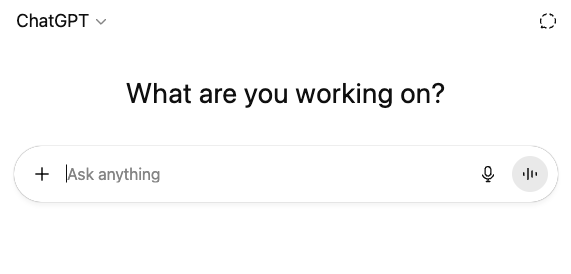AI tools like ChatGPT are both convenient and frustrating, effective and ineffective, pretty and ugly.
Like any technology, these tools have their benefits and drawbacks.
Despite its imperfections, however, AI is incredibly useful. And it’s here to stay.
With that said, here are a few ideas for using AI, based on my personal experience….
Pick one tool
If you’re overwhelmed by all the AI tools out there, here’s a suggestion…
Start by picking one tool (I use ChatGPT).
Learn what it can and can’t do.
Pay for it (ChatGPT is $20/mo).
Then, add other tools as you discover needs beyond the capabilities of your chosen tool.
And once you pick a tool, try giving it the following prompt:
I’m a [insert your role title] for an organization in the [insert your industry] industry. Please list five brief bullet points that discuss how you can make my life easier?
Block off 15 minutes, copy and paste that prompt into chat.openai.com (while making the necessary adjustments), choose one of the bullets it mentions, then start playing with it.
It’s great at making pretty (but useless) content
After using ChatGPT to help my client repurpose old blog posts into a single draft (that I could then rework into a new article), I learned this…
ChatGPT is great at making things “sound” pretty good at first glance.
But the draft that AI created had no point of existing.
Taken as a whole, it had no overarching theme.
It looked good at first, but upon the realization that the draft had nothing important to say, I had to intervene.
I had to add words.
I had to cut stuff.
I had to shape it until it actually had a reason for existing.
And that realization is, in part, why I think we have a lot of marketing noise.
It’s AI-generated fluff that looks good at first glance, but when given any scrutiny, it folds like a house of cards.
Because it has no real reason to exist.
Because no human intervened.
And that’s why intentional AI use is so important.
At least to anyone who wants to create content that is actually helpful.
It can talk down to your audience
If you use AI to write content, keep this in mind: Unless you train it not to, the typical AI tool can tend to talk to people like they don’t understand basic things that most adults know.
A big part of knowing how to use AI in your writing process is knowing what to cut.
So, use it intentionally, but know when to ditch the patronizing stuff.
Because you don’t want to risk talking down to your audience.
It won’t (completely) replace talented professionals
People who think that AI will completely replace talented copywriters, programmers, web designers, project managers, and other roles are forgetting one thing:
➡️ Someone needs to make the decisions.
➡️ Someone needs to say, “Use this” or “Adjust that.”
This is preferably someone whom the CEO trusts has the necessary experience to make such decisions.
And this is where talented professionals come into play.
These are the people who know what good AI output looks like, because they know how to do the work on their own. They are the ones who know what to choose, what to edit, and what to discard.
That’s not to say AI isn’t drastically changing jobs (it just won’t eliminate many of them).
For instance, I heard the incredibly talented David L. Deutsch say that copywriters are now creative directors (because they choose what copy to use and make necessary adjustments to it).
As a copywriter, that’s comforting to hear.
And if you’re a skilled worker, I hope you’ll become more comfortable being a decision maker.
Because there’s still a need for talented professionals…even in the age of AI.
Wrapping Up
AI isn’t going anywhere. And with good reason: It can streamline a lot of the busywork that we all once had to do. It can help us create outlines and provide useful ideas in seconds. It’s constantly improving. And yet, it has its drawbacks.
Learning how to use it intentionally (despite its drawbacks) is, in my experience, the best way forward to adapt to the changes it will bring in the marketplace.
